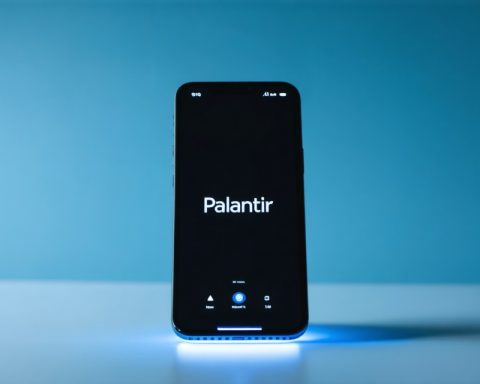- Clone Robotics introduces Protoclone, an android that moves with lifelike realism, blending advanced technology and human-like aesthetics.
- Protoclone features 206 polymer bones and over 1,000 “Myofibers,” mimicking natural muscles to replicate human movement.
- Its sensory systems include 500 sensors and four cameras, enabling near-human environmental perception and interaction.
- Clone Robotics envisions Protoclone as a household assistant, capable of performing tasks with precision and responding to spoken commands.
- The development suggests a future where robots become as ubiquitous in homes as smartphones, heralding a new era of human-machine coexistence.
- Protoclone’s release represents a significant leap in robotics, challenging traditional boundaries and reimagining everyday life with technology.
The future appears startlingly human with Clone Robotics’ latest innovation, ushering in a new era of lifelike technology. Protoclone, an android that moves with uncanny realism, has taken the Internet by storm. Shimmering skeletal frames and synthetic sinews work in concert, mimicking human gestures with an eerie elegance.
Protoclone dazzles with its complexity—composed of 206 polymer bones meticulously connected by over 1,000 artificial muscle fibers. These “Myofibers” mimic natural muscles, allowing Protoclone to bend and sway with a grace typically reserved for the living. The robot is suspended from the ceiling in a demonstration, limbs fluidly twitching, hinting at a future where machines will not just assist, but seamlessly cohabit our spaces.
The heart of Protoclone’s brilliance lies in its sensory marvels. Equipped with 500 sensors and a quartet of cameras, this android perceives its environment with near-human acuity. Its systems, designed to emulate human vascular and nervous networks, allow for nuanced interactions and decision-making.
Imagine a household assistant moving deftly around a kitchen, fetching items and responding to spoken commands with precision. Clone Robotics envisions this very future—a Protoclone that can not only walk and talk but transform daily chores into effortless tasks.
With preorders set to open shortly, Protoclone symbolizes the next frontier in robotics—a step closer to robots becoming as common in homes as smartphones are today. In sculpting a machine so human, Clone Robotics challenges us to rethink the boundaries of innovation and coexistence, as the lines between human and machine blur with each synthesized heartbeat. The robots are not just coming; they’re practically here.
Meet the Future: How Protoclone by Clone Robotics Transforms Our Understanding of Androids
How-To Steps & Life Hacks
1. Setting Up Protoclone: Once available, users will likely need guidance on integrating Protoclone into home environments. Setup might include installing software, calibrating sensors, and syncing with smart home systems. Ensure a stable internet connection for optimal performance.
2. Maximizing Efficiency: Train Protoclone to recognize household objects and routines for maximum utility. Developing specific voice commands and linking the android with smart home devices can streamline daily tasks.
3. Routine Maintenance: Regularly check the mechanical parts and software updates to ensure smooth operations. Routine diagnostics can preempt wear and tear on synthetic muscles and sensors.
Real-World Use Cases
– Healthcare: Protoclone could assist in elder care by helping with mobility tasks, medication reminders, and companionship.
– Hospitality: Hotels and resorts could use Protoclone for concierge services, guest interactions, and room service.
– Retail: Stores might employ Protoclone for inventory management, customer assistance, and as an interactive shopping guide.
Market Forecasts & Industry Trends
The robotics market is expected to reach $275 billion by 2025, driven by automation in industries like healthcare, manufacturing, and services. Companies like Clone Robotics are positioned to lead the growth in humanoid androids, blending AI with physical dexterity.
Reviews & Comparisons
Protoclone enters a competitive field alongside SoftBank’s Pepper and Honda’s ASIMO. Unlike other robots, Protoclone’s focus on realistic motion and sensory perception sets it apart. While Pepper excels in customer interaction, Protoclone offers a more lifelike experience.
Controversies & Limitations
– Ethical Concerns: As Protoclone blurs human-machine lines, questions about privacy, data collection, and autonomy arise. Ensuring ethical programming and transparent user agreements will be critical.
– Physical Limitations: While advanced, Protoclone may still have limitations in extreme environments or highly precise tasks, where human intervention remains necessary.
Features, Specs & Pricing
– Structure: 206 polymer bones, 1,000 Myofibers
– Sensory System: 500 sensors, four cameras
– Pricing: TBD, but expect high initial costs with potential for economies of scale reducing prices over time.
Security & Sustainability
– Data Security: Users should secure their networks and scrutinize permissions regarding data Protoclone can access and transmit.
– Sustainability: Clone Robotics should ensure the use of recyclable materials and energy-efficient components to minimize environmental impact.
Insights & Predictions
As AI continues to evolve, Protoclone could herald androids that seamlessly assist in daily life, with potential implications in telepresence and remote work. By 2030, humanoid robots could become integral to various industries and household tasks.
Tutorials & Compatibility
– Compatibility: Ensure firmware is updated frequently and check compatibility with existing smart home ecosystems like Amazon Alexa or Google Home.
– Tutorials: Expect a library of guides on using, customizing, and troubleshooting Protoclone upon release.
Pros & Cons Overview
Pros:
– Lifelike movement and interaction
– Potential for customized applications
– Enhances efficiency in various industries
Cons:
– High initial cost
– Privacy and ethical issues
– Maintenance and technical challenges
Actionable Recommendations
– For Consumers: Stay informed about preorder details and ensure home tech is compatible.
– For Businesses: Evaluate the ROI of integrating Protoclone into operations, focusing on areas where it can replace or augment human labor.
For more information, visit the Clone Robotics website.
These insights prepare you for the fast-approaching future where androids like Protoclone will revolutionize our daily lives, offering unprecedented convenience and interaction.











